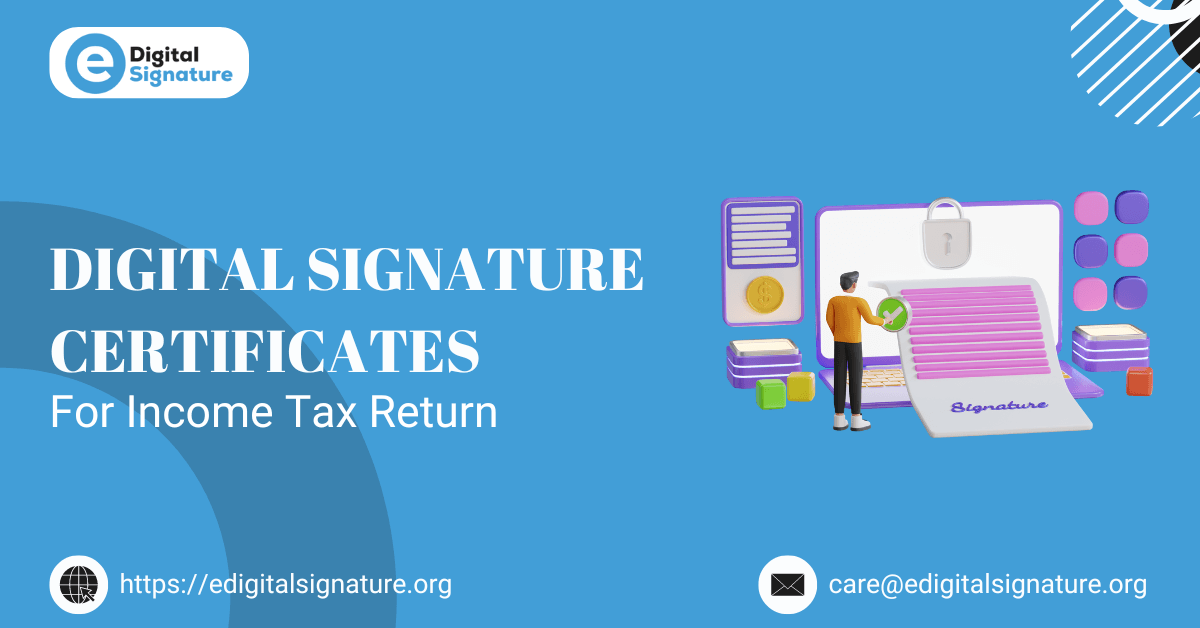
Digital Signatures Certificate for Income Tax Return
In today’s digital age, the integration of technology into various aspects of our lives has become indispensable. One such integration is the use of digital signatures for filing income tax returns. The digital signature certificate (DSC) has revolutionized the process of tax filing, making it more secure, efficient, and environmentally friendly. This article delves into the concept of digital signatures, their significance in income tax filing, and the benefits they bring to taxpayers and the government alike.
Understanding Digital Signatures
A digital signature is an electronic form of a signature that can be used to authenticate the identity of the sender of a message or the signer of a document. It ensures that the original content of the message or document remains unchanged during transmission. Digital signatures are based on public key cryptography, also known as asymmetric cryptography. This cryptographic method uses a pair of keys – a private key and a public key. The private key is used to create the digital signature, while the public key is used to verify it.
A Digital Signature Certificate (DSC) is an electronic document that contains the digital signature of an individual or entity. It is issued by a Certifying Authority (CA) and is used to sign electronic documents and transactions. In the context of income tax returns, a DSC is used to electronically sign and file tax returns, ensuring the authenticity and integrity of the documents.
Importance of Digital Signatures in Income Tax Filing
1. Enhanced Security
One of the primary reasons for using digital signatures in income tax filing is the enhanced security they provide. Traditional paper-based tax filing systems are susceptible to forgery, tampering, and unauthorized access. Digital signatures, on the other hand, use robust encryption techniques to ensure that the documents are secure and cannot be altered without detection. This significantly reduces the risk of fraud and unauthorized access to sensitive financial information.
2. Legal Validity
In many countries, including India, digital signatures have legal validity and are recognized under various regulations. The Information Technology Act, 2000 in India provides legal recognition to electronic signatures and stipulates that they are equivalent to handwritten signatures. This means that digitally signed tax returns are legally binding and hold the same value as physically signed documents.
3. Time and Cost Efficiency
Filing income tax returns manually can be a time-consuming and cumbersome process, involving printing, signing, and mailing physical documents. Digital signatures streamline this process by allowing taxpayers to sign and submit their returns electronically. This not only saves time but also reduces the costs associated with paper, printing, and postage. Additionally, electronic filing with digital signatures minimizes the chances of errors and delays, leading to faster processing of tax returns.
4. Environmental Benefits
The shift towards digital signatures and electronic filing of tax returns also has significant environmental benefits. By reducing the reliance on paper-based processes, the use of digital signatures helps in conserving natural resources and reducing the carbon footprint associated with printing, transportation, and disposal of paper documents. This aligns with the broader goal of promoting sustainable practices and protecting the environment.
Obtaining a Digital Signature Certificate
To use a digital signature for income tax filing, taxpayers need to obtain a Digital Signature Certificate (DSC) from a licensed Certifying Authority (CA). The process of obtaining a DSC involves the following steps:
1. Choose a Certifying Authority
The first step is to select a Certifying Authority (CA) that is licensed to issue DSCs. In India, there are several licensed CAs, including the likes of eMudhra, Sify, and NSDL. Taxpayers can choose a CA based on their preferences and requirements.
2. Submit Application
Once a CA is selected, taxpayers need to fill out an application form and submit the required documents. These documents typically include proof of identity, proof of address, and a passport-sized photograph. Some CAs may also require additional documents or information based on their specific requirements.
3. Verification and Issuance
After the submission of the application and documents, the CA will verify the information provided. This may involve physical verification or video verification, depending on the CA’s procedures. Once the verification process is complete, the CA will issue the Digital Signature Certificate. The DSC can be stored on a USB token, which can be used to sign electronic documents and transactions.
Using Digital Signatures for Income Tax Filing
Once a taxpayer has obtained a Digital Signature Certificate, they can use it to file their income tax returns electronically. The process involves the following steps:
1. Register on the Income Tax Portal
Taxpayers need to register themselves on the income tax e-filing portal, which is managed by the Income Tax Department. This registration process involves providing basic details, such as PAN (Permanent Account Number), name, and contact information.
2. Download the Utility
The Income Tax Department provides a utility for preparing and filing tax returns. Taxpayers need to download and install this utility on their computers. The utility supports various file formats and allows users to enter their financial details, calculate tax liability, and generate the XML file required for e-filing.
3. Attach the Digital Signature
After preparing the tax return using the utility, taxpayers need to attach their digital signature to the XML file. This can be done using the utility itself, which provides an option to attach the DSC. Taxpayers need to connect the USB token containing their DSC to their computer and follow the instructions provided by the utility.
4. Submit the Return
Once the digital signature is attached, the tax return can be submitted electronically through the e-filing portal. The portal provides an acknowledgment receipt, which can be downloaded and kept for future reference.
Also Read, Digital Signatures Certificate For Income Tax Return
Conclusion
The adoption of digital signatures for income tax filing marks a significant step towards modernizing the tax administration system. Digital signatures provide enhanced security, legal validity, and time and cost efficiency, making the tax filing process more convenient for taxpayers. Moreover, the environmental benefits of reducing paper-based processes cannot be overstated. As technology continues to evolve, the use of digital signatures is likely to become even more widespread, further simplifying and securing the process of filing income tax returns.






